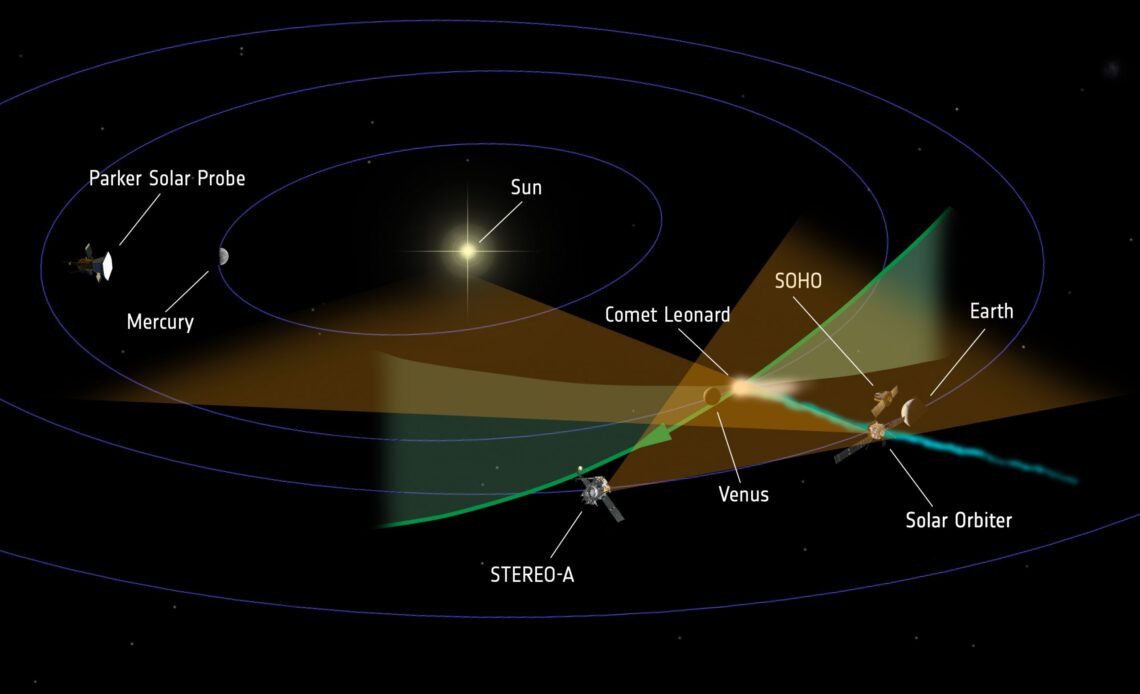
The ESA/NASA Solar Orbiter is as of now making a progression of swings around the nearby planet group so it can draw nearer to its inevitable objective, the Sun. While the logical research center ventures, it has the chance to explore a few other fascinating subjects, as well, including a comet it as of late had a nearby experience with.
Comets are lumps of for the most part ice that get ready as they approach the Sun and radiate gasses that structure unmistakable tails. Ordinarily, they have exceptionally curved (i.e., extremely oval-formed) circles, and they can emerge out of the furthest profundities of the nearby planet group, changing very little over the long haul. Considering that, the opportunity to explore a comet very close is invigorating, as it offers researchers the chance to get a brief look at what the nearby planet group may have resembled some time in the past.
Sunlight based Orbiter went through the tail of one such comet, called Comet C/2021 A1 Leonard, throughout the span of a few days around December 17, 2021. ESA has now shared more data about the comet and what its specialists desire to gain from it.
The Solar Orbiter group had the option to anticipate when the orbiter would go through the comet’s tail by checking out information about the sun powered breeze, which are floods of vivacious particles radiated by the Sun. By entering information about sun oriented breeze into a program for displaying shuttle and comet circles, they could see when Solar Orbiter would converge with the comet’s tail.
The group utilized a set-up of instruments on Solar Orbiter called the Solar Wind Analyser (SWA) to identify what synthetic compounds were available in the comet’s tail, tracking down particles of oxygen and carbon, sub-atomic nitrogen, and particles of carbon monoxide, carbon dioxide, and potentially water. The specialists were additionally ready to take a gander at the manner in which the sun powered breeze impacted the attractive field around the comet, which is hauled out from the Sun’s attractive field.
This is the second time Solar Orbiter has approached a comet, as it likewise went through the tail of comet ATLAS in 2020. This time around, a greater amount of Solar Orbiter’s instruments were on the web and prepared to notice, assembling extra information that will assist stargazers with working on how they might interpret comets.
“This sort of extra science is dependably a thrilling piece of a space mission,” said ESA Project Scientist for Solar Orbiter Daniel Müller. “At the point when the comet ATLAS crossing was anticipated, we were all the while adjusting the rocket and its instruments. Likewise, the comet divided not long before we arrived. However, with Comet Leonard we were thoroughly prepared – and the comet didn’t self-destruct.”
With that experience total, Solar Orbiter will keep circumnavigating nearer to the Sun, making its nearest pass to date in March 2022 at around 30 million miles.
